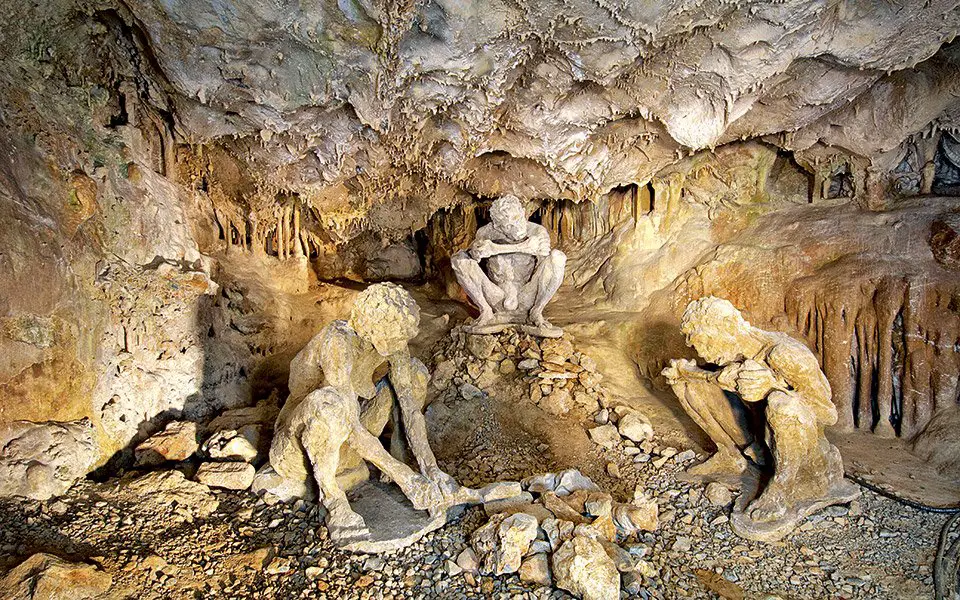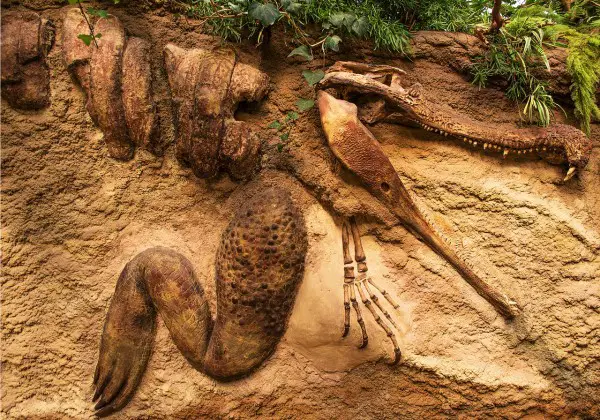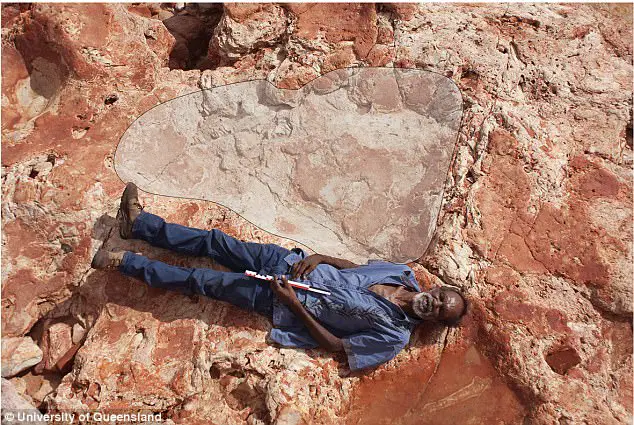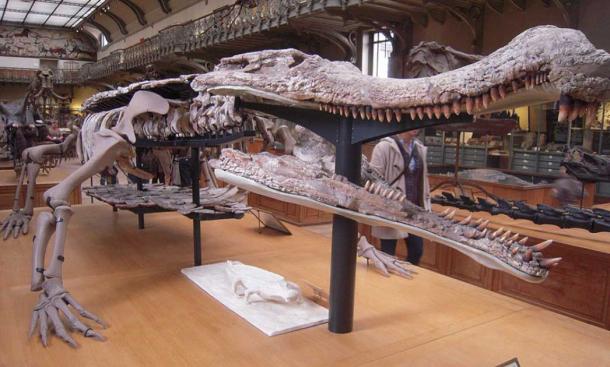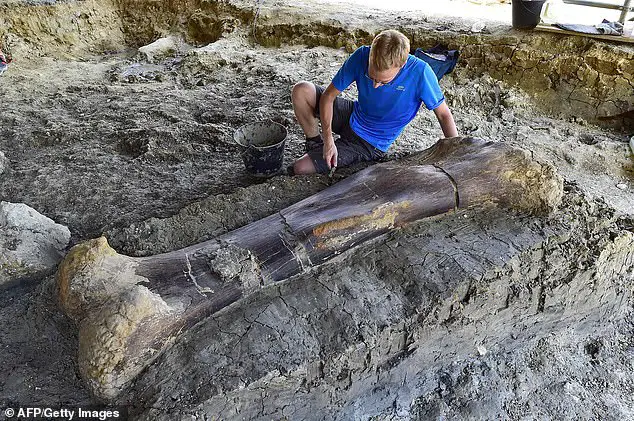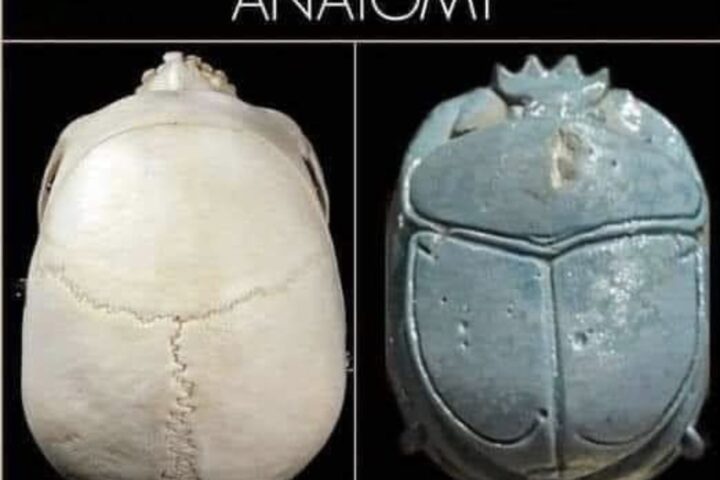In the shadow of Katsika Hill, a labyrinthine world lies hidden beneath the earth’s surface. This is the realm of Petralona Cave, a place where nature’s capricious hand sculpted a subterranean wonder over a million years. Known as “the red-rock cave” for its bauxite-tinted walls, Petralona spans over 10,400 square meters, a vast canvas of stalactites, stalagmites, and otherworldly formations.
Discovered in 1959, this cave opened a portal to the prehistoric era. Its significance in Greece’s repertoire of over 12,000 caves is unparalleled, thanks to its rich fossil record, which includes some of the oldest human remains in Greece, discovered half a century ago.
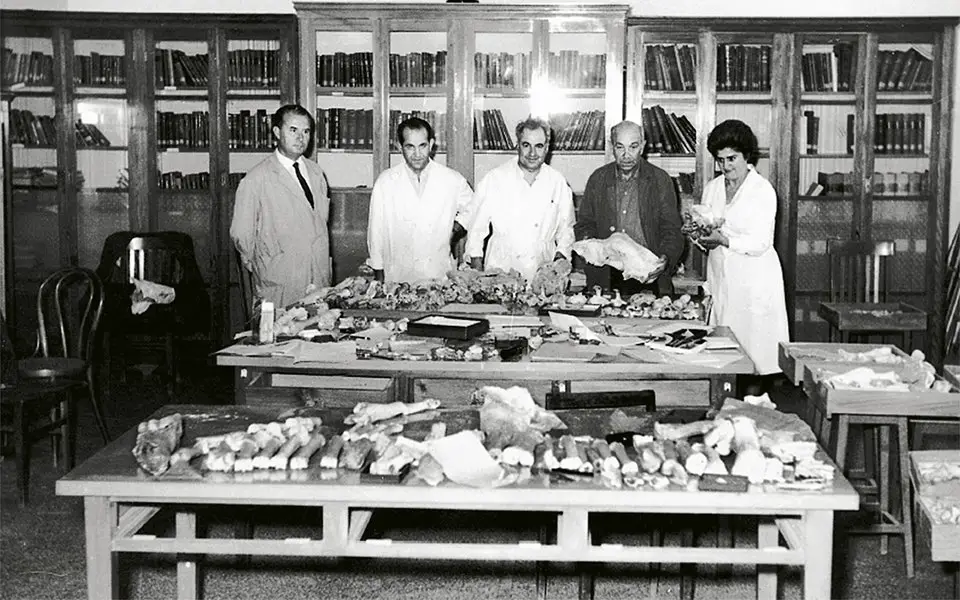
Villagers from Petralona, intrigued by a mysterious opening at the base of Katsika Hill, were the first to venture into this enigmatic space. Their discovery of ancient bones and teeth led to extensive scientific exploration. The cave soon gained international recognition as a trove of geological and anthropological marvels.
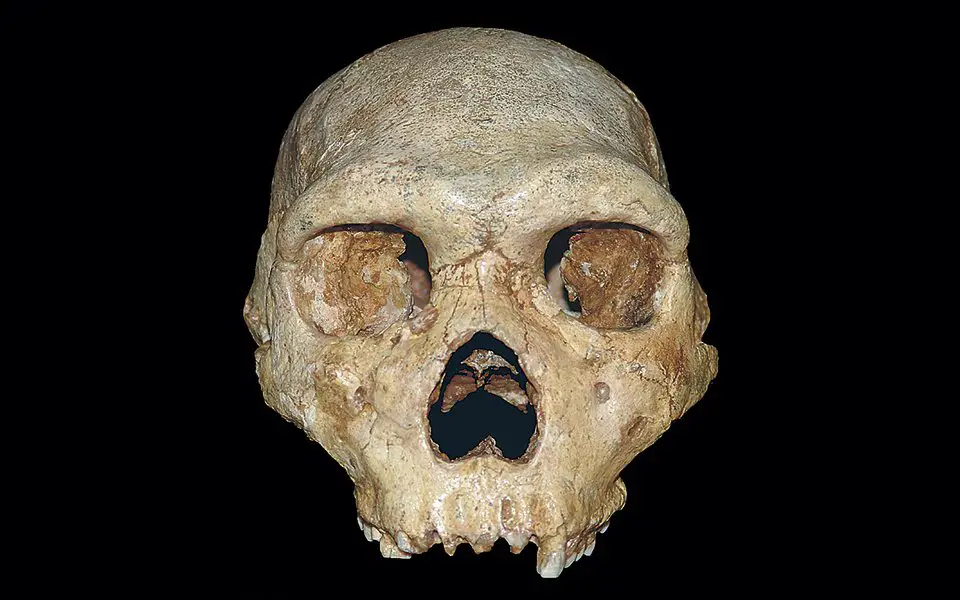
The crown jewel of these discoveries was a fossilized human skull, unearthed among remains of extinct species. This skull, transitioning from Homo erectus to Homo sapiens and estimated to be 200,000 years old, became a critical piece in the puzzle of human evolution.
Despite its extensive exploration, the cave’s full story remains untold. Visitors can access its depths through a man-made tunnel, marveling at the natural artistry and two intriguing cave paintings. Yet, the question of whether humans originally inhabited this cave lingers, shrouded in mystery.
Dr. Evangelia Tsoukala, a prominent paleontologist, believes that future research will unveil the cave’s secrets. Her words, “Halkidiki is continually producing fossils,” hint at the untapped potential of this region. From giraffes to prehistoric horses, the area is a treasure trove of the ancient past.
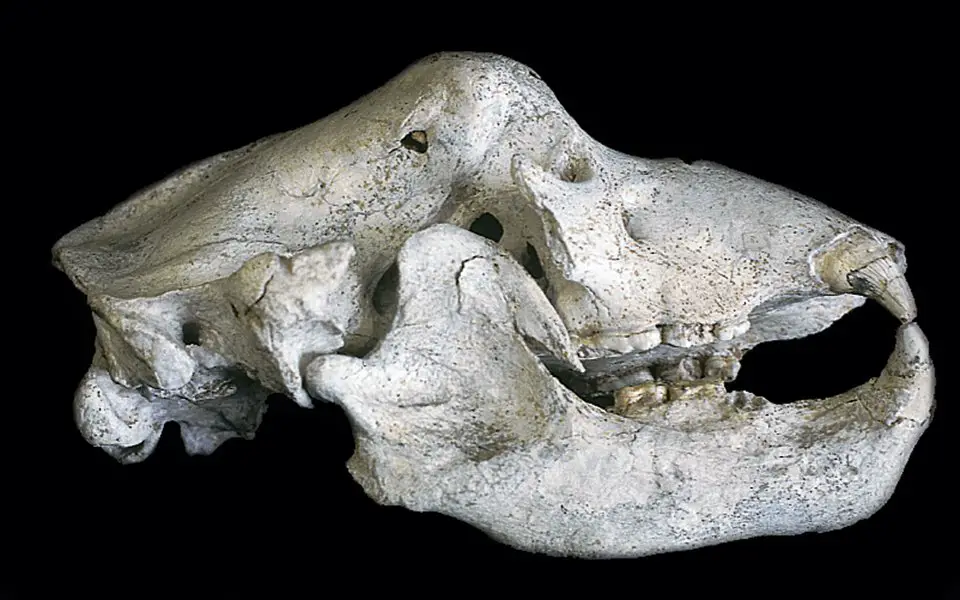
Not far from the cave, the Anthropological Museum showcases a vast collection of fossils and artifacts, while the Geology-Paleontology Museum at Aristotle University houses the famous Petralona Skull. These relics offer glimpses into our distant past and perhaps clues to our future.

